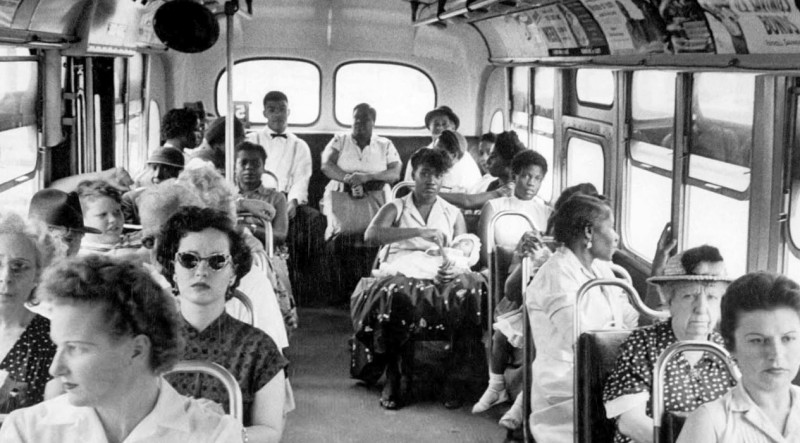
The Montgomery Bus Boycott, which took place in 1955, was a pivotal event in the Civil Rights Movement. Sparked by the arrest of Rosa Parks for refusing to give up her bus seat to a white passenger, the boycott lasted for 381 days and served as a catalyst for significant changes in racial segregation laws. This article explores the historical context, key figures, significant milestones, and lasting impact of the Montgomery Bus Boycott.
The Montgomery Bus Boycott in 1955: A Pivotal Event in the Civil Rights Movement
The Montgomery Bus Boycott in 1955 marked a significant turning point in the fight against racial segregation in the United States. To understand its significance, it is crucial to consider the historical context that existed in Montgomery, Alabama, during that time.
Historical Context
Segregation in Montgomery, Alabama, was deeply ingrained in society. African Americans were subjected to a system of laws known as the Jim Crow Laws, which enforced racial segregation and discrimination. These laws limited the rights and opportunities of African Americans in various aspects of life, including public transportation.
Rosa Parks and the Arrest
Rosa Parks, a courageous African American woman, played a pivotal role in igniting the Montgomery Bus Boycott. Parks was a dedicated civil rights activist who had been involved in the National Association for the Advancement of Colored People (NAACP). On December 1, 1955, she refused to give up her bus seat to a white passenger and was subsequently arrested.
The Montgomery Improvement Association (MIA)
Following Rosa Parks' arrest, the African American community in Montgomery organized themselves under the leadership of the newly formed Montgomery Improvement Association (MIA). Dr. Martin Luther King Jr., a young minister at the time, emerged as a prominent leader and spokesperson for the movement.
Organizing the Boycott
The MIA employed various strategies to organize and sustain the boycott. They organized mass meetings, circulated pamphlets, and utilized church networks to spread the word. The African American community displayed immense unity and resilience throughout the boycott, despite facing numerous challenges and acts of violence.
The Economic Impact
One of the most significant aspects of the Montgomery Bus Boycott was its economic impact. African Americans, who comprised the majority of bus riders, decided to boycott the Montgomery bus system, causing a severe financial strain on the city's transportation infrastructure. The African American community established carpool systems, walked long distances, or utilized alternative means of transportation during the boycott.
Legal Battle and Supreme Court Ruling
The boycott resulted in a legal battle known as Browder v. Gayle, in which four African American women, including Rosa Parks, were the plaintiffs. The case challenged the constitutionality of bus segregation in Montgomery. In 1956, the Supreme Court ruled that bus segregation was unconstitutional, marking a significant victory for the Civil Rights Movement.
Aftermath and Legacy
The Montgomery Bus Boycott's success led to the desegregation of buses in Montgomery. It also inspired similar acts of resistance and activism across the United States, further fueling the momentum of the Civil Rights Movement. The boycott elevated Martin Luther King Jr. to a national figure and set the stage for his influential leadership in subsequent civil rights campaigns.
Conclusion
The Montgomery Bus Boycott in 1955 was a pivotal event in the Civil Rights Movement. Through the collective efforts of the African American community, led by Rosa Parks and the Montgomery Improvement Association, the boycott challenged racial segregation and achieved significant legal and societal changes. This historic event not only brought an end to bus segregation in Montgomery but also inspired a generation of activists and became a symbol of nonviolent resistance in the fight for equality.
Brahmaputra River: Exploring its Hindu Significance and Cultural Importance
"From Filth to Freshness: The Clean India Movement Revolution"
The Divine Godavari River: Exploring Hindu Aspects and Sacredness